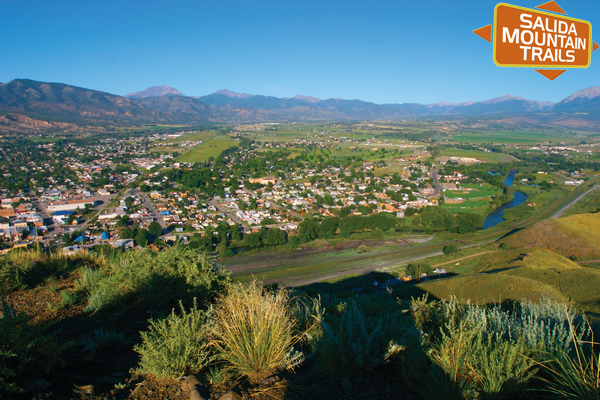Dear Editor,
Salida Mountain Trails (SMT) board of directors have shared our concerns about the Envision Chaffee County Recreation in Balance (ERiB) Recreation Plan with the Chaffee County Commissioners, County Planning and Zoning Department (P&Z), and the ERiB leadership team. However, P&Z voted on June 29 to approve the plan as presented to them – which as far as we can tell denotes county approval. SMT feels that a document of this magnitude that affects all Chaffee citizens should have been more thorough/open public input, a less rushed process, and be fully approved by our county commissioners.
The brief public comment period on the draft ERiB plan closed on June 20 resulted in 137 pages of feedback, but we see no substantive differences between the draft plan and the final plan that was pushed quickly to P&Z one week later for approval. An even cursory view of these 137 pages will show huge support for our trail systems and also details many Chaffee citizens’ concerns with the proposed “Community Concentration Zones”.
This plan dictates that any new trails should be confined to these “Community Concentration Zones” which lie just outside city boundaries and compose a very small percentage of the huge amount of public lands in Chaffee County.
SMT does support the direction for many of the recreation plan initiatives and applaud the much-needed efforts to accomplish wildfire mitigation, support to the land management agencies to develop a management plan for dispersed camping, and support for recreation-related infrastructure. SMT has participated in the ERiB task force since it was formed, attending almost every meeting and doing our best to make positive contributions. SMT has also brought up the concerns detailed below on numerous occasions to the ERiB leadership team which makes all key decisions.
From the beginning, the ERiB process has seemed biased from our perspective. The title of the email announcing the initial Envision survey that drove much of the direction was: “Are You Concerned about Recreation Growth?”. Clearly, this led survey respondents toward providing responses that cast a negative light on recreation in general.
Many of the questions in the ERiB survey that were used to establish their direction were about outdoor recreation in general terms and led the survey participant to think about the worst – dispersed camping abuses, trash, human waste. We get it, this is bad and the ERiB plan does attempt to address these issues which we fully support!
SMT is concerned that the Envision survey data is weighted far too heavily in defining and driving the goals and objectives of the resulting ERiB Recreation Plan. These goals and objectives are what we feel to be the bias of the ERiB organizers bringing with them, the focus of the organizations from which they participate and lead. Non which are recreation providers.
A major concern for SMT is that the survey had relatively few specific questions about specific forms of outdoor recreation and their value and importance. Very little specific data was gathered about our trail systems, our users, and the value to our community. We feel the generalities about overall outdoor recreation are highly unfair without gathering the data specific to specific recreation activities.
Also, from what we can determine, less than 1,000 Chaffee County residents responded to this survey. This is not statistically valid to provide a mandate for severely limiting specific types of recreation that are working well and should continue to be reasonably enhanced to help meet increasing demand.
Any new trails we propose from the BLM and Forest Service already go through a very thorough environmental review for effect on wildlife/flora/archeology. The federal processes are rigorous and comprehensive. We also already voluntarily coordinate any/all proposed new trails and infrastructure with Colorado Parks and Wildlife (CPW) as a part of the initial vetting process.
This plan attempts to dictate where future trails can go (Community Concentration Zones) and where they cannot go. We believe these decisions should be left to the BLM and Forest Service as currently is done with their long-established NEPA and Travel Management Planning processes.
These “Community Concentration Zones” imply another level of approval by ERiB. We feel this is redundant and an overreach – and possibly not legal and/or enforceable.
These zones were not proposed by the BLM or Forest Service. The recreation plan does not detail how this would work. Because the land management agencies are involved with the ERiB leadership team, will this affect their NEPA and Travel Management processes?
Many of the comments in the 137 pages from the public comment period will show that there is little public support and much opposition to this part of the plan. We obviously strongly feel that legal NEPA-approved trails with seasonal closures, if necessary, are not primary contributors to wildlife decline – by design. This view is not shared by ERiB. The great community and economic value that these trails provide vs. the impact they have on public lands is a win-win in the eyes of a vast majority of people. We would have loved to see this type of data gathered by their survey.
ERiB claims that they have “created a shared community vision”. The community buy-in for at least the above-mentioned portions of their plan is lacking.
Poncha Springs elected officials are openly opposed to the “Community Concentration Zones”. We would like to also hear from Salida and Buena Vista on this.
SMT welcomes any and all constructive dialogue on this. If any of these concerns resonate with you, please contact your Chaffee County Commissioners, your elected city officials, BLM/Forest Service reps, and let them know your thoughts and concerns.
Mike Smith
Salida Mountain Trails Board President
Featured image: Courtesy of Salida Mountain Trails.







Recent Comments